Andrew Paul Wood – 7 September, 2013
In the nineteenth century theology was replaced by the equally abstract, theoretical and causidical study of economics. The universe was no longer moved by the invisible hand of God, but by the Invisible Hand of Adam Smith. Market fluctuations were the modern divine wrath and could only be propitiated by sacrifices. It seems somewhat logical that art would come around to investigating that, and to a certain extent, since the 1960s it has.
Christchurch
David Bennewith, Robert Hood, Amy Howden-Chapman, Anja Kirschner & David Panos, Kim Paton
Supply + Demand
Curated by Melanie Oliver
31 August - 6 October
Once upon a time the primary subject of art was theology. This remained pretty much the state of things up until the nineteenth century when theology was replaced by the equally abstract, theoretical and causidical study of economics. Free marketers in particular bear all the hallmarks of fundamentalism. The universe is not moved by the invisible hand of God, but instead by the Invisible Hand of Adam Smith. Market fluctuations are the modern divine wrath (especially if you have been indulging in heresies like Keynesianism - ie. playing God) and can only be propitiated by sacrifices (austerity measures and asset sales). It seems somewhat logical that art would come around to investigating that, and to a certain extent, since the 1960s it has - in the form of much idealistic hot air about the commodification of art (although I can’t think of many sane artists who in their heart of hearts aren’t thinking “yeah, yeah, I’m really glad you love the work, but I’d much rather you’d just sign a cheque”).
Rather than fart around with the art market, The Physics Room show Supply + Demand goes directly to the dark arts of capitalist economics for its inspiration. The work of six artists have been brought together, and although they are each quite different, they are strongly united in theme and aesthetic. In particular I am reminded of Michael Stevenson’s installation This is the Trekka at the 2003 Venice Biennale, which dealt with similar themes.
I am a huge fan of Christchurch artist Rob Hood - he is easily one of the most interesting and eclectic artists in the country. His contribution is When the mountains bow down and become valleys (2013) a big installation of office furniture and electric pedestal fans arranged on desks and flow charts scrawled on whiteboards. The stiff breeze from the fans animates this monument to the ennui of bureaucracy by keeping the pivoted flip lids of the waste paper baskets in continual motion. This upending of normality is a three dimensional objet trouvé/readymade interpretation of economic modelling partly inspired by the ‘black swan theory‘, where every unexpected event is artificially and retrospectively rationalised in hindsight - economic models being based on the illusion of a definitive system. The work reminds me a lot of Hood’s 2003 Physics Room collaboration with Simon Lawrence Through my repeated attempts to repair the window, I have developed pneumonia, which had a similar theme, but was more simulacra than minimalist sculpture.
Amsterdam-based designer, David Bennewith‘s installation Continuities of Forms in Space (2013) is a rather lovely cut acrylic facsimile of an old wrought iron spiral staircase threaded with red flow chart-type arrows imbedded with Euro coins. The coins are the artist’s collection of Italian twenty euro coins while the stair case (with them) is intended to evoke Italian Futurist artist Umberto Boccioni’s famous sculpture Unique Forms of Continuity in Space (MoMA, New York, 1913). The sculptural forms of the work represent the fluidity of the exchange rate between the Euro and New Zealand dollar over a week and alluding to both the ongoing relationship between art, culture and money, and Bennewith’s own painful awareness of the effects of the exchange rate on his student loan repayments.
Amy Howden-Chapman‘s What Depressions Look Like (2013) is a chilling video work with sound by Yek Koo, and accompanying artist book, documenting a large pit dug as part of a construction project in Los Angeles, but now dormant and abandoned due to the global financial crisis. The work, as much allusive and elliptic documentary as straight work of art, brings home to the viewer the juxtaposition of titanic corporate and human scale in relation to The Great Recession.
Kim Paton’s Documentation of Free Store (2010-2011) and Deadweight Loss (2013) - designed by University of Canterbury design lecturer Matt Galloway - presents economic modeling intended to account for and correct the wastefulness of our production systems, extrapolating on her experiences from her earlier Free Store project which took surplus goods from various businesses and offered them to the public for free.
The non-site documentary wall work depicts economics equations every bit as impenetrable to the average viewer as some of the philosophical theories self-referentially favoured by other artists. Unless you are an economist, you are forced to just appreciate the aesthetic interest of numbers, letters and mysterious symbols. Essentially here economic theory is simultaneously rendered concrete as an object and utterly abstract as an idea. This is perhaps one of the works most difficult to get one’s head around.
UK-based Anja Kirschner and David Panos’ Ultimate Substance (2012) is a lush and fragmentary video installation anchored in the history and cultural legacy of the silver mines in Lavreotiki, Greece, which in antiquity made Athens rich and leading to the introduction of coinage in the ancient Greek world. This beautiful work incorporates references to archaeology, philosophy, mathematics and ritual, working outward from the theory that the introduction of coinage brought about a cognitive paradigm shift important to the emergence of the humanist traditions of the west.
Ultimate Substance departs from the hypothesis that the introduction of coinage in the ancient Greek world effected a profound cognitive shift that was key to the emergence of western philosophic, scientific and dramatic traditions. Filmed over a year in Greece in and around the Numismatic Museum in Athens and in nearby Lavreotiki, the popular imagery of classical Athens is counterpointed by vast mining galleries - a trick well used by Piranesi in his depictions of Rome.
What Supply + Demand reminds us is that what is often presented to the public as inevitable rules of cause and effect in neoclassical economics, are in fact all theoretical assumptions. The interesting parallel is that both art and economics are essentially attempts to represent speculative abstract aspects of a dynamic reality, and indeed both art and economics have been entwined in this way since their beginnings.
Andrew Paul Wood
Recent Comments
Ralph Paine
Yes, as if being an artist were some kinda 'rational choice' in the first place. But I'm really digging deep ...
Owen Pratt
another way of reducing Andrew's words...'although I can’t think of many sane artists' : )
Ralph Paine
We might want to call this the William Powhida Syndrome: on the one hand, amazing drawings/paintings satirising, and highly critical ...
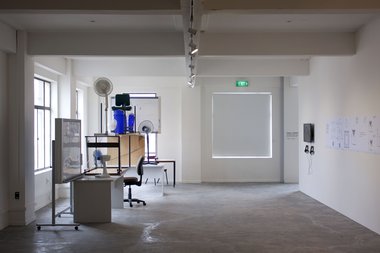

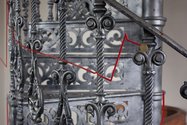
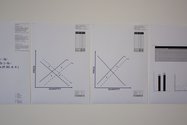
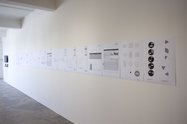
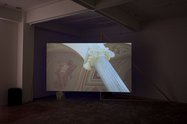
 Advertising in this column
Advertising in this column Two Rooms presents a program of residencies and projects
Two Rooms presents a program of residencies and projects



This Discussion has 11 comments.
Comment
Ralph Paine, 4:55 p.m. 9 September, 2013 #
I.
Why the b_tch-tone in your opening paragraph? Yes, given the current set up, of course artists like receiving cheques in exchange for works: pay the bills, reduce the debt. And no doubt artists also like being glamoured by curators, getting involved in their projects and hopefully receiving $$$ for services rendered (does The Physics Room pay artists’ fees?). Some artists also teach for wages, stack supermarket shelves, deal drugs, work in advertising, do late shifts at the local video store, care for the elderly, are practising Trustafarians: whatever. But just as none of this enforces total, unquestioning acquiescence, nor does it preclude or negate the possibility of being against the current set up, in whatever shape or form this being-against may manifest itself.
Karl Marx liked receiving £££, and most often these came from his very patient friend and collaborator Friedrich Engels. Between 1850 and 1870 Engels worked as a respected salary man in the Manchester office of his family’s cotton manufacturing firm, all the while supporting Marx and family in London as Marx researched and wrote Das Kapital; his tour de force which remains today one of the best handbooks available on/on being against the “dark arts of Capitalist Economics.” Even the somewhat aristocratic Roberto Calasso writes that the first chapter of the first section of Capital is “the only great demonology text produced by the bourgeois age”, a text in which Marx “is already shaken with convulsions” as he “clutches jackets, and pieces cloth in mad pursuit of the metamorphoses of commodities, that ‘social hieroglyphic’ with its restless mobility, which still seems ‘at first sight like something obvious and banal.’ Instead it will turn out to be ‘something very twisted, full of metaphysical cunning and THEOLOGICAL whims,’ something ‘sensitive and supersensitive’ [emphasis added].”‡
Ralph Paine, 4:57 p.m. 9 September, 2013 #
II.
Regrettably, no mention of Marx in your review. But yeah nah, that would’ve forced a rethink of your little reductionist/evolutionist history lesson: the emphasis above (and much else in Marx) points toward it not being the case that in the nineteenth century economics replaces theology. Rather, what happens is a transformation in the relation of economics to theology, a relation that had previously undergone many ad hoc and geographically dispersed transformations, mutations, shifts, etc; and yes, also many attempted abandonments, refusals of, and escapes from this dyadic entanglement. Economics didn't suddenly emerge with Adam Smith, any more than theology suddenly disappeared with him: Aristotle wrote of economics (see Marx); Thomas Aquinas, a medieval theologian, wrote of economics (an important text against usury); India and China had myriad ‘economic’ texts; and so & so forth; and today Giorgio Agamben is exemplary in pointing out that theology remains the very basis of all governmental (economic) power.#
So when you say correctly that art and economics have been there together from the beginning, are we not thus obliged to include theology in this togetherness? And yet from what abstract yet real place or source might we trace this “beginning”? The Ur-state? And are we not thus equally obliged to include the possibilities of being-against and of escape as being among the dynamic elements of this beginning? The Ur-nomad?
..............
‡ Roberto Calasso, “Désses Entretenues” in The Forty Nine Steps, trans. John Sheply, Minneapolis & London: The University of Minnesota Press, 2001, p 64.
# See Giogio Agamben, The Kingdom and the Glory: For a Theological Genealogy of Economy and Goverment, trans. Lorenzo Chiesa (with Matteo Mandarini), Stanford, California: Standford University Press, 2011.
Andrew Paul Wood, 1:15 a.m. 12 September, 2013 #
Regrettably I don't give a flying f***k Ralph. Marxism's historical determinacy is every bit as ridiculous as theological eschatology. It's an art review which you are obviously reading far too much into regarding my ideological leanings. Nothing you have said disproves my points in any way.
Ralph Paine, 3:13 p.m. 12 September, 2013 #
Ernst Bloch wrote that the best thing about religion is that it makes for heretics. We could say the same about Marxism.
And Marx was somewhat heretical even about his own thinking; constantly researching, corresponding, questioning, and revising right up to his death. And one aspect of his later thought was precisely the idea of historical determinism; or what was becoming very apparent to him, a lack thereof. Since the sixties this important ‘heretical’ thread in the late Marx has been further elaborated by Althusser, Balibar, Deleuze & Guattari, Negri, and many others, and now constitutes a crucial dimension of Marxian scholarship.
Barry Thomas, 4:59 p.m. 9 September, 2013 #
I would suggest there have been many artists in Aotearoa raising a finger or two to Korporate Kapitalist Kulture and doing so for for many a year... a show I had in 2007 Devonport entitled "Di-vested interest" being but one.
The market has quite simply become the enemy of the people and the environment...
Barry Thomas
http://bowalleyroad.blogspot.co.nz/2010/08/riders-of-storm.html
Ralph Paine, 3:13 p.m. 10 September, 2013 #
Yeah, I think Andrew acknowledges that there's been plenty of "Korporate Kapitalist Kulture" critique from artists, but he wants to critique the critique for being a. idealistic and thus ineffectual, and b. already captured by what it critiques. These are important points. But I ask: why adopt a cynical "b_tch-tone" about it?
Double binds!
Andrew Paul Wood, 1:17 a.m. 12 September, 2013 #
No Ralph, I want to point out the hypocrisy of criticising the art market and willingly participating it in it at the same time. I'm sorry you are utterly humourless and tone deaf to irony.
Ralph Paine, 3:15 p.m. 12 September, 2013 #
We might want to call this the William Powhida Syndrome: on the one hand, amazing drawings/paintings satirising, and highly critical of, the current art world/market/set-up/system as operating in contemporary NYC. On the other hand, highly collectable and rapidly gaining in value as I write, etc. Like I said: a double bind. But again, why the cynical bitch-tone about it? Nothing original or funny involved in you pointing this out to Mr Powhida, is there?
Owen Pratt, 12:01 p.m. 13 September, 2013 #
another way of reducing Andrew's words...'although I can’t think of many sane artists' : )
Ralph Paine, 9 a.m. 14 September, 2013 #
Yes, as if being an artist were some kinda 'rational choice' in the first place.
But I'm really digging deep here trying to figure out who all these 'sane' yet hypocritical artists are... At least in this neck of the global woods. Any suggestions?
Barry, are you sane?
Ralph Paine, 10:03 a.m. 11 September, 2013 #
http://www.e-flux.com/journal/becoming-revolutionary-on-kazimir-malevich/
Participate
Register to Participate.
Sign in
Sign in to an existing account.